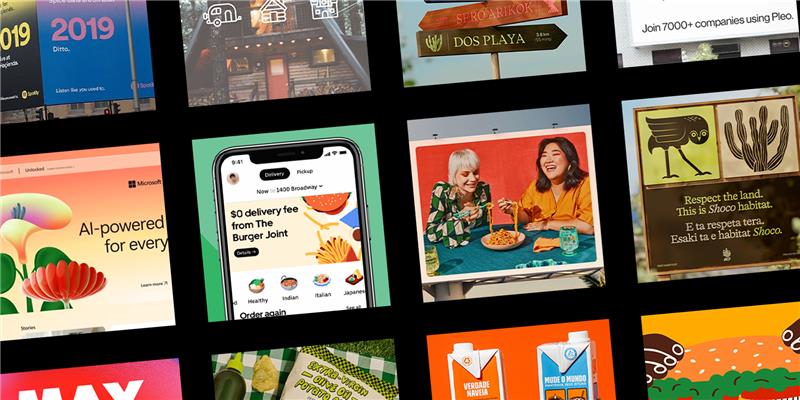
Delight your audiences as they move through the journey to purchase with creative that matches their intent, aligns with strategic insights.

With today’s consumers being attracted by authenticity and increasingly resistant to traditional advertising methods, it’s no surprise that the popularity of native advertising is growing steadily.
Forecasts highlight its potential to soon dominate advertising with a recent Business Insider report claiming 74% of US advertising revenue will be generated by native advertising by 2021. The Native Advertising Institute also recently forecast that world expenditure on native ads will account for 33% of advertising revenue by 2018.
With internet traffic predicted to treble in four years’ time, with over half visiting content providers according to Cisco, it’s easy to understand why native advertising across digital channels will continue to be of great value to brands.
For advertisers, native offers a way to out-maneuver ad blocking software and banner blindness. It is also a means for brands to form a deeper relationship and better engagement with its consumers, while marketing its products in a manner which appears invited, not forced.
Studies show consumers also appreciate native advertising. The Native Advertising Institute study found 74% of publishers felt native advertising added value for its readers and viewers, while research from Sharethrough and IPG Media Lab discovered sponsored content was viewed at a 26% rate compared to editorial which had a 24% rate.
Today, the largest segment of native ad spending is within social media, with native-style display adverts being the fastest growing segment. Online articles and video content are also considered very effective. Other examples of native adverts include Google paid search results, sponsored pins on Pinterest and content-recommendation links at the end of articles.
Native adverts on social media benefit from blending in well with other posts from users, e.g. promoted tweets, and sponsored posts on Instagram or Facebook. If it is a popular social media site, sponsored posts can have a huge reach and adverts also feed into the brand’s SEO. Social media sites allow consumers to engage with native advertisements by sharing, commenting or liking, which also helps to build brand awareness, increases the credibility of the message, invites greater exposure and can drive new traffic to the brand’s website, Facebook page or blog, etc.
User-generated content might be the most-favoured and cost-effective means of native advertising on social media. This involves social-media users, who are also consumers of a certain brand’s products, using their social platforms to promote these favoured brands through competitions or creative campaigns, e.g. active wear clothing brand Lululemon asked customers to post Instagram images of themselves wearing their products with the hashtag #thesweatlife.
Influencer marketing offers another approach to native advertising, where social influencers partner with a brand, often involving payment, and use their blog or social media platform to deliver brand information that has been tailored to suit their audience’s interests and benefit, while consumers enjoy being given information from an individual they trust.
Another benefit of native advertising on social media is the opportunity to place adverts with the right audiences. This can be done through targeting existing customers or finding lookalike audiences which can be identified from search interests, demographics and even psychology analysis generated from features such as Facebook likes. Examples of targeted marketing include Twitter allowing advertisers to gain exposure to users who use certain hashtags or keywords in their timeline, e.g. delivering a promoted Tweet to someone searching for a restaurant recommendation, or LinkedIn helping B2B marketers display their content to users based on their job title or industry.
Subscribe to our monthly newsletter.
Looking to the future, it’s easy to see that native advertising continues to hold exciting customisation potential. One creative alliance includes Spotify featuring sponsored playlists like the ‘Adidas Boost Your Run Playlist’ for runners. And traditional content and advertising boundaries will continue to blur, one latest example being Forbes magazine placing a paid native advert from Fidelity Investments on its February 2017 cover.
There’s little doubt that content which incorporates video will have increased popularity with native advertisers. A recent Facebook evaluation found that ad recall, brand lift and purchase consideration is significantly increased with just seven seconds of exposure to video content. Also, following the success of Pokémon Go ($10million of ad revenue was generated each day at its peak), marketers would be wise to consider the possibilities of combining native advertising and virtual reality, particularly since VR popularity is expected to soar (one estimate says it will generate income worth $90 billion by 2020).
At first, it seemed native advertising and scalability would continue to be opposing terms. But, a few solutions could offer ways to combine the two. The first is content recommendation which displays links to native advertising content at the end of other articles or blog posts. Visitors are drawn to click because of the similar or relevant content they promise to yield.
A second solution to scalability is programmatic native advertising. 2017 is predicted to be a year where this concept emerges into new and exciting directions, especially with there being nearly 100% native participation with major DSPs (demand-side platforms). Certain native ad formats may well suit being matched with programmatic buying principles and user targeting to be given its best exposure.
Delight your audiences as they move through the journey to purchase with creative that matches their intent, aligns with strategic insights.
Delight your audiences as they move through the journey to purchase with creative that matches their intent, aligns with strategic insights.
Subscribe to our monthly newsletter.